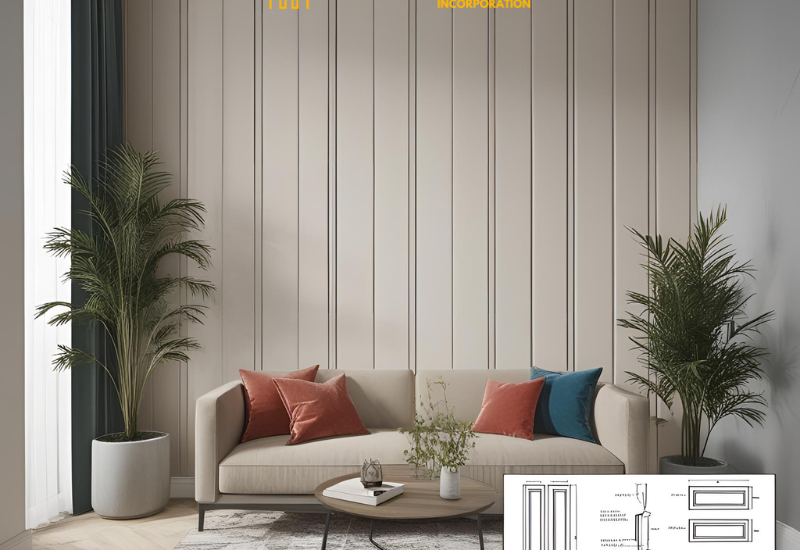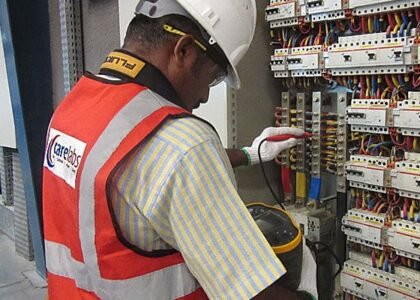Building Information Modeling (BIM) is transforming the construction industry, and one of its most significant impacts is on the creation of wall panel shop drawings. Traditionally, shop drawings were developed using 2D drafting methods, which often led to inconsistencies, misinterpretations, and coordination challenges.
However, BIM introduces a highly detailed, collaborative, and data-rich approach, allowing for precise modeling, real-time clash detection, and seamless integration with fabrication and construction workflows.
This revolution in shop drawings enhances accuracy, reduces errors, and streamlines the entire design-to-fabrication process. In this article, we explore how BIM is reshaping wall panel shop drawings and the benefits it brings to architects, engineers, and manufacturers.
Understanding Wall Panel Shop Drawings
Wall panel shop drawings are detailed plans that show how wall panels should be made and installed. These drawings are very important in construction because they help builders, engineers, and designers understand the exact size, shape, and materials needed for each panel.
A shop drawing includes different views of the panel, such as front, side, and top views. It also shows measurements, materials, connections, and any special details like openings for windows or doors. These drawings ensure that everything fits perfectly when the panels are installed on-site.
One of the main benefits of wall panel shop drawings is that they reduce errors. Since they provide clear instructions, workers can follow them easily, which helps save time and money. Without proper shop drawings, mistakes can happen, leading to delays and extra costs.
Another advantage is better communication. These drawings serve as a common reference for architects, engineers, and construction teams, ensuring everyone is on the same page. If any changes are needed, they can be made on the drawings before construction begins.
Creating accurate shop drawings requires skill and attention to detail. Many companies use computer-aided design (CAD) software to make precise drawings. These digital tools help designers make adjustments quickly and create clear, professional plans.
The Role of BIM in Wall Panel Shop Drawings
Building Information Modeling (BIM) has changed the way construction projects are planned and executed. When it comes to wall panel shop drawings, BIM plays a crucial role in improving accuracy, efficiency, and collaboration.
Shop drawings are detailed plans that show how wall panels should be fabricated and installed. Traditionally, these drawings were created manually, which often led to errors and delays. With BIM, these drawings are generated digitally, ensuring greater precision. The 3D modeling capability of BIM allows designers, engineers, and contractors to visualize the wall panels in a virtual environment before construction begins. This helps detect clashes, errors, or design issues early in the process.
BIM also enhances collaboration. Different teams can work on the same model in real time, making it easier to coordinate changes. If an architect modifies the design, the updates reflect instantly, ensuring everyone stays on the same page. This reduces misunderstandings and rework, saving time and money.
Another benefit of BIM in wall panel shop drawings is improved material management. BIM models provide accurate measurements, reducing material waste and ensuring efficient use of resources. Prefabrication also becomes easier, as manufacturers can rely on precise BIM-generated drawings to produce panels that fit perfectly on-site.
Overall, BIM simplifies the process of creating wall panel shop drawings by improving accuracy, teamwork, and efficiency. As construction technology advances, BIM will continue to play a key role in making projects more successful.
Benefits of Using BIM for Wall Panel Shop Drawings
Building Information Modeling (BIM) is a powerful tool that makes the process of creating wall panel shop drawings more efficient and accurate. Here are some key benefits of using BIM for wall panel shop drawings:
- Accuracy and Precision
BIM allows for highly detailed and accurate shop drawings. It reduces errors by providing a 3D model that helps detect clashes and inconsistencies before construction begins. This minimizes costly mistakes and rework. - Improved Coordination
BIM enables seamless collaboration between architects, engineers, and fabricators. Since all stakeholders work from the same digital model, it ensures that everyone is on the same page, reducing misunderstandings and delays. - Time and Cost Savings
With BIM, changes to the design can be made quickly and automatically updated across all drawings. This saves time compared to traditional 2D drafting, where modifications need to be done manually. Reducing errors also means lower material waste and labor costs. - Better Visualization
Unlike 2D drawings, BIM provides a 3D representation of wall panels, making it easier to understand the design and assembly process. This helps in better planning and decision-making. - Automation and Efficiency
BIM software can generate shop drawings automatically, reducing the manual workload. It also supports prefabrication, ensuring that wall panels are manufactured precisely according to specifications.
BIM Tools and Software for Wall Panel Shop Drawings
Building Information Modeling (BIM) has changed the way construction projects are designed and managed. When it comes to wall panel shop drawings, BIM tools help improve accuracy, efficiency, and collaboration.
One of the most popular BIM software for wall panel drawings is Revit. It allows designers to create 3D models of wall panels with precise details. Users can add dimensions, materials, and connection details, making it easier for manufacturers to understand the design.
Another useful tool is AutoCAD, which is widely used for creating detailed 2D shop drawings. It provides flexibility in drafting and ensures that every measurement is correct before production.
For structural and prefabricated wall panels, Tekla Structures is a great option. It specializes in steel and concrete detailing, helping engineers create shop drawings that are ready for fabrication.
SolidWorks is another software that can be used for panel drawings, especially when working with custom designs and detailed assemblies. It is known for its precision and 3D modeling capabilities.
BIM software also improves collaboration. Tools like Navisworks allow different teams to review and coordinate wall panel designs, reducing errors before construction begins.
Using BIM for wall panel shop drawings helps save time, reduce material waste, and prevent costly mistakes. Whether you are working with wood, steel, or concrete panels, choosing the right BIM tool makes a big difference in the construction process.
The End Note
Building Information Modeling (BIM) is revolutionizing the creation of wall panel shop drawings by enhancing accuracy, improving coordination, and streamlining workflows. Unlike traditional 2D drafting, BIM enables precise 3D modeling, real-time collaboration, and automated shop drawing generation, reducing errors and material waste.
With tools like Revit, AutoCAD, Tekla Structures, and SolidWorks, architects, engineers, and manufacturers can efficiently design, fabricate, and install wall panels with greater precision.
As technology continues to evolve, BIM will remain an essential tool in the construction industry, driving efficiency, cost savings, and project success.






